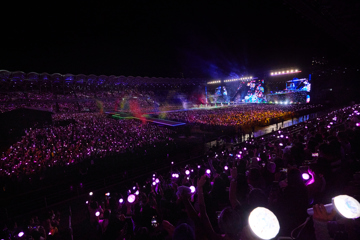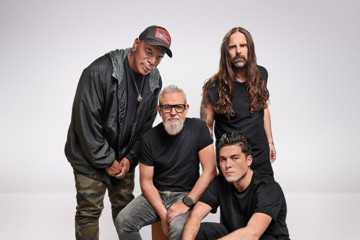All In The Code
"That’s why I think samurai cinema has so long been appropriated by Western cinema, because the core of the stories is so strong, so true to so many."
Samurai movies had a glorious heyday in the 1950s and '60s – huge domestic success in Japan, bountiful international and cinematic influence – yet, by the early '70s, the glory days were over. A new program at ACMI, Samurai Cinema: The Way Of The Warrior, erects a worshipful shrine at the feet of the genre, looking at both its classics and less-heralded works, with a scattering of contemporary and curiously-related films.
And Samurai Cinema begins and ends with Akira Kurosawa, who's represented by his iconic, forever-imitated pictures Rashomon, The Seven Samurai, The Hidden Fortress and Yojimbo. “It's hard to get away from Kurosawa,” laughs Richard Sowada, ACMI's Head of Film Programs, who assembled the Samurai Cinema season. “He basically makes up half the program.”
Given only three of the program's 12 films were made in the past four decades – why dust off this genre? He sees the persistence of samurai films within the pop-cultural canon, far beyond their native culture, as being a sign of their continued relevance and sure universality. “The Bushido code – rectitude, courage, benevolence, honesty, loyalty, mercy, honour – those are just human themes,” Sowada references the moral codes of Japan's ancient warriors, which tempered the violence of the military life with Shinto and Buddhist beliefs. “That's why I think samurai cinema has so long been appropriated by Western cinema, because the core of the stories is so strong, so true to so many.”
Sowada himself “fell backwards” into samurai movies, his love of '70s Spaghetti Westerns invariably leading to the films that inspired them. Samurai Cinema features three famous (and/or infamous) examples of Japanese cinema being freely adapted (and/or ripped off) by more famous American pictures, Yojimbo providing the template for Sergio Leone's A Fistful Of Dollars; The Seven Samurai officially remade as the Western, The Magnificent Seven, and The Hidden Fortress being stripmined by George Lucas when writing Star Wars. Rather than showing these director antecedents, Sowada has programmed George Stevens' 1953 Western, Shane, which isn't influenced by samurai movies at all. Why? “It has all the tenets of the Bushido code, and Shane [the lead character] basically is a samurai, the way he walks into town, and exists outside of these two opposing sides.”
Don't miss a beat with our FREE daily newsletter
The other outsider films are Jim Jarmusch's 1999 hip hop/samurai/Mafioso mash-up Ghost Dog: The Way Of The Samurai (“Ghost Dog is interesting in that it's about someone who is a samurai, and who deeply respects the code of a samurai, but it's not actually a samurai movie”) and Henri-Georges Clouzot's 1953 French crime-thriller, The Wages Of Fear. And new-millennial samurai-movie revivalism is represented by two radically different pictures: Yôji Yamada's graceful Twilight Samurai and Takashi Miike's hyper-violent 13 Assassins.
The program is divided into three 'chapters' – Courage, Honour and Honesty – drawing back on the tenets of the warrior. “I looked at the little groups of islands that would collect when I put these films all floating together. And even though I couldn't do a program for all seven tenets, I really wanted to structure them by the Bushido code.”







